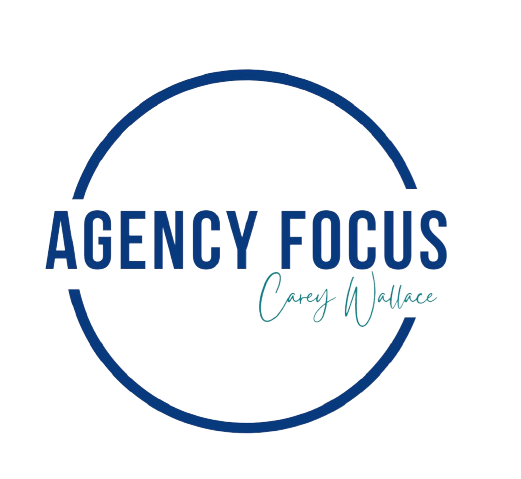Carey Wallace, Agency Focus
It is no secret that merger and acquisition (M&A) activity in the independent agency space is at an all-time high. While it took a brief pause in the first quarter of 2020, it has been going strong through the end of 2020 and continues at a record pace in 2021. The M&A marketplace is not unlike the housing market that we are experiencing across the country. In many areas, there is great demand for homes due to low-interest rates. That, combined with low inventory has caused housing prices to soar. In the independent insurance marketplace, the low-interest rates, strong balance sheets, high customer retention rates, and continued overall performance despite the pandemic have also increased demand for agencies that are run well. The headlines are full of named transactions selling at record multiple levels, so as one of the 56% of agency owners that may be nearing retirement and contemplating selling your agency, you must be wondering what this all means when it comes to you and your agency.
Types of transactions
There are two main types of transactions when it comes time for an agency owner to transition: internal & external. An internal transaction is just a transition of leadership to a current employee, family member or current partner of the agency, which will continue to operate under this new leadership. An external transaction can include a sale to another retail agency or a sale to a large broker or private equity-backed entity. The factors that impact the multiples for each of these types of transactions are vastly different. The financial impact of those factors is what causes the expected multiples in each of these types of transactions to vary greatly. Let’s take a closer look at each of these types of transactions.
External sale –Private Equity-Backed transactions
These are the transactions that make the headlines and command multiples of 12-15x earnings before interest, taxes, depreciation, and amortization (EBITDA). In these transitions, agency owners can expect to receive the highest possible price for their agency. However, typically this is not all paid in cash at close, as there is generally an earn-out or deferred portion. These transactions are typically targeted at large platform agencies that are being bought to enter a marketplace, niche, or area of the country as overall growth and investment strategy, but in some cases, smaller agencies are also targeted if they are a fit. These transactions are backed by private equity funds that have long-term goals for requiring a return on equity but are not dependent on the cash flow of the agency being purchased to makeup that returns in the short-term or to fund the transaction buy-out. In these transactions often there is an earn-out bonus available, and the current owners or leadership stay engaged for a period to ensure that key accounts remain, and the value and performance of the book remain strong during the transition. In many cases the opportunities to realize economies of scale are incredibly high in these types of transactions. That means that the agency location, staff, systems, technology, and infrastructure are folded into a larger entity, making the return on investment much higher than if the agency continued to operate on its own. In some cases, the culture of the agency is completely changed in this type of external sale transaction. Not all transactions require all these changes, so it is important to weigh all the terms of the deal to make sure it fits with your overall goals and what is most important to you.
External sale – Retail agency
To provide agency owners with an idea of what the common multiple is for these types of transactions, I combined the information that I have gathered from my own experiences, the industry published information, databases that are available through the NACVA, and reached out to some industry banking firms who specialize in lending to agencies for these types of transactions. When an agency owner decides to sell to another retail agency, there is also an opportunity for the combined entity to realize some economies of scale. The degree to which expenses can be reduced depends on the structure of the transaction. In these types of external sale transactions, the purchasing agency must be sure that the transaction will “cash flow”. According to Mike Strakhov at Live Oak Bank, “Many agencies must obtain a loan to fund these sales, and it is our practice to require that the deals that we approve “cashflow”. That means that the expected revenue from the agency that they are buying will cover 1.25x the expected expenses.” This can be achieved with the elimination or reduction of the compensation of the current owner as well as the reduction or elimination of other expenses that can now be shared. The decision to utilize the same systems, administrative support, or even location can impact the profitability of the transaction. With these types of sales, agency owners can negotiate factors such as the ongoing employment of staff, involvement of the current agency owner, or maintaining a presence in their community. With each of these decisions the profitability and multiple that can be supported changes. Both Mike Wagar of Westfield Bank and Mike Strakhov of Live Oak Bank concurs that the multiples that can be expected for an agency under $1.5M in Commission Revenue that is selling externally to another agency typically range between 5.75 – 7.5x EBITDA.
Internal sale
In an internal sale, the economies of scale are limited to the reduction or elimination of the compensation for the current agency owner and eliminating any non-recurring expenses of the current owner. In many cases, for the new owner to take over the operations of the agency, the current owner must move into a mentorship role for a period to ensure that the transition is smooth, and the agency is set up for success. There may also be a need to hire additional resources upon the exit of the current agency owner to cover all the roles inside the agency. This will limit the profitability of the agency and minimize the ability to reduce or eliminate enough expenses to cashflow a higher multiple or price for the agency in an internal sale. This is the main reason why internal sales typically see a multiple of 5.0 – 7.0x EBITDA. Over 40% of internal transitions to the next generation are not successful because of the financial strain on the agency. It is critical to set up the next generation for success and makes realistic decisions about the price and multiple for an internal transition based on the specific situation in your agency.
The multiples that you can expect to receive in the sale or transition of your agency are largely dependent on what is most important to you as an agency owner. For those that wish to continue to transition to the next generation and remain in their community, price is not the most important factor. For those that wish to obtain the highest price, they will need to be willing to accept changes in their agency operations that may be vastly different than what it is prior to the sale of their agency. For those that want a blend, there are many different options available that must be weighed and considered. Mike Wagar offered this advice to any agency that is looking to sell either internally or externally: “For all agencies that are preparing for an ownership transition, the best thing you can do is focus on cleaning up your financials.” By eliminating expenses that are not essential you will increase your profitability, increase the value of your agency as well as increase the ability to properly fund an internal transition. For more information on setting realistic expectations for your agency transition, visit www.agency-focus.com.
For more information, visit my website www.agency-focus.com or contact me at carey@agency-focus.com.


Recent Comments